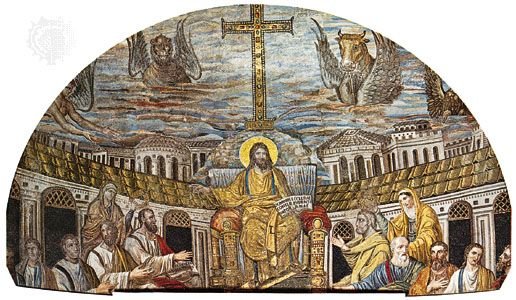Overview of the term ‘Nova’
A nova is a fascinating astronomical event that captures the imagination of both scientists and stargazers alike. Derived from the Latin word for “new,” a nova refers to a sudden and temporary increase in the brightness of a star. This celestial phenomenon occurs in binary star systems where a white dwarf, a dense, compact star, accumulates matter from its companion star. When enough material collects on the surface of the white dwarf, a thermonuclear explosion ignites, resulting in a spectacular display of light.
Etymology of the term ‘Nova’
The term ‘nova’ finds its origins in ancient Latin, where it means “new” or “young.” The concept of a nova as a celestial event was first introduced by the Danish astronomer Tycho Brahe in the late 16th century. He used the term to describe the sudden appearance of a bright “new star” in the night sky. Over time, the term ‘nova’ became synonymous with these explosive stellar events that captivate astronomers and skywatchers to this day.
Historical Significance of ‘Nova’ in Astronomy
Nova events have played a crucial role in advancing our understanding of the universe throughout history. In the early 20th century, the study of novae led astronomers to realize the importance of nuclear fusion in powering stars. The discovery of the thermonuclear reactions during a nova explosion paved the way for groundbreaking research on stellar evolution and nucleosynthesis.
Novae also serve as cosmic laboratories for studying the behavior of matter under extreme conditions. The intense heat and pressure generated during a nova can simulate the conditions found in the cores of massive stars, allowing scientists to investigate the formation of heavy elements, such as gold and platinum, which are created through nuclear reactions in these cataclysmic events.
Curiosities and Lesser-known Facts
- Novae are relatively common events in the universe, with hundreds occurring each year in our Milky Way galaxy alone.
- Despite their dazzling appearance, novae are relatively short-lived, typically fading back to their original brightness within a few weeks or months.
- Some novae are recurrent, meaning they undergo multiple outbursts over time. The most famous recurrent nova is the system known as RS Ophiuchi, which has erupted at least six times since its discovery in 1898.
- Novae are often classified into different types based on their light curves and spectral characteristics, providing valuable insights into the underlying physical processes.
“The study of novae not only reveals the incredible power of the universe but also highlights the interconnectedness of celestial phenomena and their impact on the evolution of galaxies.”
Exploring the mysteries of novae continues to be an active area of research in modern astronomy. Advancements in observational techniques and theoretical models have allowed scientists to delve deeper into the intricacies of these explosive events. By studying novae, astronomers gain invaluable insights into the life cycles of stars, the enrichment of the universe with heavy elements, and the dynamic processes that shape galaxies.

The Meaning of ‘Nova’ in the Bible
In the context of the Bible, the term ‘Nova’ does not have a direct reference or mention. However, the Bible is rich in symbolism and metaphors, and various interpretations have been attributed to different celestial phenomena, including ‘Nova.
Biblical References to ‘Nova’
While there is no specific mention of ‘Nova’ in the Bible, there are verses that describe celestial events and heavenly signs. One such example is found in the book of Matthew 2:2, where the wise men from the East followed a star to find the newborn Jesus. This event is often associated with the appearance of a bright and extraordinary celestial object, similar to the phenomenon of a ‘Nova’.
Interpretations of ‘Nova’ in Religious Texts
Interpretations of celestial phenomena, including ‘Nova’, can vary among different religious texts and traditions. Some interpret a ‘Nova’ as a sign of divine intervention or a symbol of spiritual transformation. It is seen as a celestial event that signifies the presence or the intervention of a higher power. Others may interpret a ‘Nova’ as a symbol of renewal, hope, or even a call to action.
Symbolism of ‘Nova’ in Religious Context
Symbolically, a ‘Nova’ can represent a significant change or transformation. Just as a ‘Nova’ is a sudden outburst of light and energy in the universe, it can be seen as a metaphor for personal or spiritual enlightenment. The burst of light from a ‘Nova’ can symbolize the illumination of truth or the revelation of divine wisdom.
Moreover, the transient nature of a ‘Nova’, which eventually fades away, can symbolize the impermanence of worldly things and the need to focus on the eternal and the spiritual. It can serve as a reminder to seek a deeper connection with the divine and to prioritize spiritual growth and development.
Alternative Interpretations of ‘Nova’
In addition to its biblical references and religious symbolism, the term ‘Nova’ has also found significance in various other aspects of human knowledge and culture. Let’s explore some alternative interpretations of ‘Nova’ from scientific, cultural, and mythological perspectives.
Scientific Explanations for ‘Nova’
The term ‘Nova’ has a specific meaning in the scientific realm, particularly in the field of astronomy. In astronomy, a ‘Nova’ refers to a stellar explosion that results in a sudden, temporary increase in brightness of a star. This phenomenon occurs when a white dwarf star, which is the remnant of a dead star, accumulates material from a companion star. The accumulated material triggers a thermonuclear explosion on the surface of the white dwarf, leading to the release of an enormous amount of energy and the sudden brightening of the star.
Other Cultural and Mythological References to ‘Nova’
Outside the realm of science, ‘Nova’ has been referenced in various cultural and mythological contexts. For example, in Latin, ‘Nova’ translates to ‘new’ or ‘young’, suggesting a sense of freshness and renewal. This concept of newness and rebirth can be found in different mythologies and folklore around the world. In some cultures, ‘Nova’ is associated with the concept of a cosmic or celestial event that marks the beginning of a new era or a significant change in the world.
Modern-day Understanding of ‘Nova’
In modern times, the term ‘Nova’ has also taken on metaphorical meanings beyond its scientific and mythological interpretations. It is often used to describe something new, innovative, or groundbreaking. In this context, ‘Nova’ represents a symbol of progress and advancement, reflecting humanity’s constant pursuit of knowledge and discovery. Whether it be in technology, art, or any other field, the term ‘Nova’ has come to signify the emergence of something extraordinary and transformative.
Throughout history and across different disciplines, ‘Nova’ has held multifaceted meanings that encompass scientific phenomena, cultural symbolism, and societal progress. Its significance extends beyond the biblical references, inviting us to explore the wonders of the universe, embrace the cycles of renewal and change, and celebrate the human spirit of exploration and innovation.

Rockin’ the faith, one verse at a time!
Growing up, the Bible’s stories deeply impacted me. Now, with over 15 years of preaching experience, I blend timeless teachings with modern technology, making them relevant for today’s world.
Bible Hub Verse is my platform to share historical insights and thought-provoking articles, exploring both familiar and uncommon Christian topics. My passion is building a welcoming online space for everyone to learn, grow in their faith, and discover the Bible’s enduring message.
Join the journey!
God bless you.






